
Fabales is an order of flowering plants included in the rosid group of the eudicots in the Angiosperm Phylogeny Group II classification system. In the APG II circumscription, this order includes the families Fabaceae or legumes, Quillajaceae, Polygalaceae or milkworts, and Surianaceae. Under the Cronquist system and some other plant classification systems, the order Fabales contains only the family Fabaceae. In the classification system of Dahlgren the Fabales were in the superorder Fabiflorae with three families corresponding to the subfamilies of Fabaceae in APG II. The other families treated in the Fabales by the APG II classification were placed in separate orders by Cronquist, the Polygalaceae within its own order, the Polygalales, and the Quillajaceae and Surianaceae within the Rosales.

Sun Prairie is a city in Dane County, Wisconsin, United States. A suburb of Madison, it is part of the Madison metropolitan area. The city's population was 35,967 at the 2020 census, the second-most populous in Dane County.

Prairie Public's television service is a state network of public television signals operated by Prairie Public Broadcasting. It comprises all of the PBS member stations in the U.S. state of North Dakota.
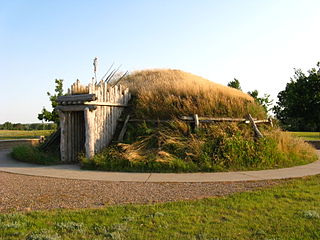
The Knife River Indian Villages National Historic Site, which was established in 1974, preserves the historic and archaeological remnants of bands of Hidatsa, Northern Plains Indians, in North Dakota. This area was a major trading and agricultural area. Three villages were known to occupy the Knife area. In general, these three villages are known as Hidatsa villages. Broken down, the individual villages are Awatixa Xi'e, Awatixa and Big Hidatsa village. Awatixa Xi'e is believed to be the oldest village of the three. The Big Hidatsa village was established around 1600.

Platanthera praeclara, known as the western prairie fringed orchid and the Great Plains white fringed orchid, is a rare and threatened species of orchid native to North America.

Sun Prairie East High School (SPEHS) is a public high school in Sun Prairie, Wisconsin, United States. It is one of two high schools in the Sun Prairie Area School District, the other being Sun Prairie West High School. During the 2022-2023 school year, there were 1,365 students at Sun Prairie East High School. SPEHS is a WIAA Division 1 school and is a member of the Big Eight athletic conference in all sports except for football, in which it is a WIAA Division 2 school and a member of the Badger Conference.
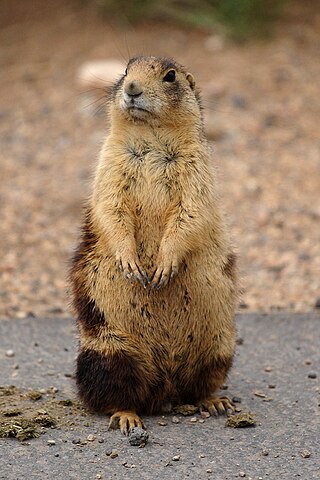
The Utah prairie dog is the smallest species of prairie dog endemic to the south-central steppes of the American state of Utah.
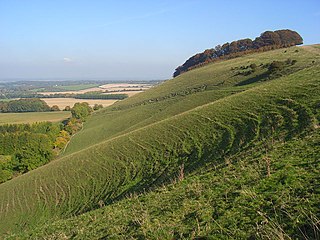
Ham Hill is a hill and area of chalk downland in Wiltshire, England, on the steep banks running alongside the road from the village of Ham to Buttermere, close to the Berkshire border. A biological Site of Special Scientific Interest, notified in 1971, covers 1.5 hectares of the site; this designation is due to the site's species-rich plant and insect communities, which include some rare species. Notable among these is the musk orchid, which has been confirmed at only one other site in Wiltshire.
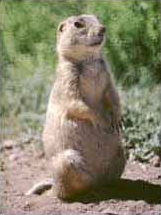
Gunnison's prairie dog is one of five species of prairie dog. This species belongs to the squirrel family of rodents, and are predominantly related to the North American and Eurasian ground squirrels. Gunnison's prairie dogs are primarily distributed in the Four Corners region of the United States.

Comesperma is a genus of shrubs, herbs and lianas in the family Polygalaceae. The genus is endemic to Australia. It was defined by the French botanist Jacques Labillardière in his 1806 work Novae Hollandiae Plantarum Specimen. The genus name is derived from the Ancient Greek words come ("hair") and sperma ("seed"), and relates to the seeds bearing tufts of hair. The genus is distributed over southern Australia, particularly in the southwest of Western Australia, where 19 species are found. 24 species have been described.
The Prairie Centre for the Study of Ukrainian Heritage (PCUH) is an academic unit of St Thomas More College, a liberal arts college federated with the University of Saskatchewan. Initiated in 1998 and formally established in 1999, its mission is to promote the advanced study of various aspects of Ukrainian heritage, culture and life; to preserve documentary materials relevant to such study; and to disseminate results conducted under its auspices.
Northern Tallgrass Prairie National Wildlife Refuge was established to provide a means of working with individuals, groups, private organizations, and government entities to permanently preserve a portion of the remaining remnant tracts of northern tallgrass prairie in Minnesota and Iowa. The United States Fish and Wildlife Service is acquiring remnant prairie tracts for the refuge in both easement and fee title interests from willing sellers.

The Manitoba Tall Grass Prairie Preserve is located in southeastern Manitoba near Gardenton and Vita, this is about 50 kilometres (31 mi) south of Steinbach, Manitoba. It is one of the last remaining stands of tallgrass prairie in Manitoba and is part of the Tallgrass Aspen Parkland conservation area in Manitoba and Minnesota. Several groups and organizations help in land preservation in the Manitoba Tall Grass Prairie such as the Nature Conservancy of Canada, Nature Manitoba, Environment Canada, Manitoba Conservation and the Manitoba Habitat Heritage Corporation.

Lespedeza leptostachya is a rare species of flowering plant in the legume family known by the common names prairie lespedeza and prairie bush-clover. It occurs in the Upper Midwest region of the United States. The flowers are creamy-white to purplish and arranged into a narrow terminal spikes.
Forest House or Charles Ross House is a house designed by architect Frank Lloyd Wright in 1902 on the south shore of Lake Delavan in Walworth County, Wisconsin. The home is known as one of the finest examples of Frank Lloyd Wright's Prairie style design, as well as a prime example of Wright's dismembering of the traditional box. The Forest House was constructed in 1902 by members from the Prairie School.
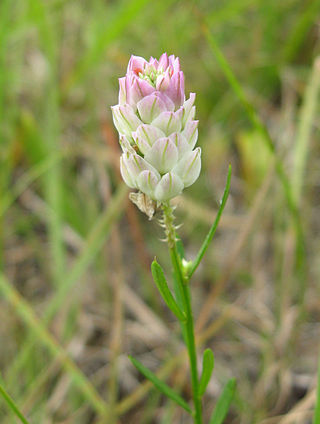
Polygala sanguinea, known as purple milkwort, field milkwort, or blood milkwort is an annual plant in the Polygalaceae (milkwort) family. It is native to central and eastern North America.

Brady's Bluff Prairie State Natural Area is a Wisconsin Department of Natural Resources-designated State Natural Area featuring a steep, southwest-facing bluff rising over 450 feet above the Mississippi River. Over 100 species of prairie plants have been found at this site.

Senega alba, commonly called white milkwort, is a species of flowering plant in the milkwort family (Polygalaceae).















